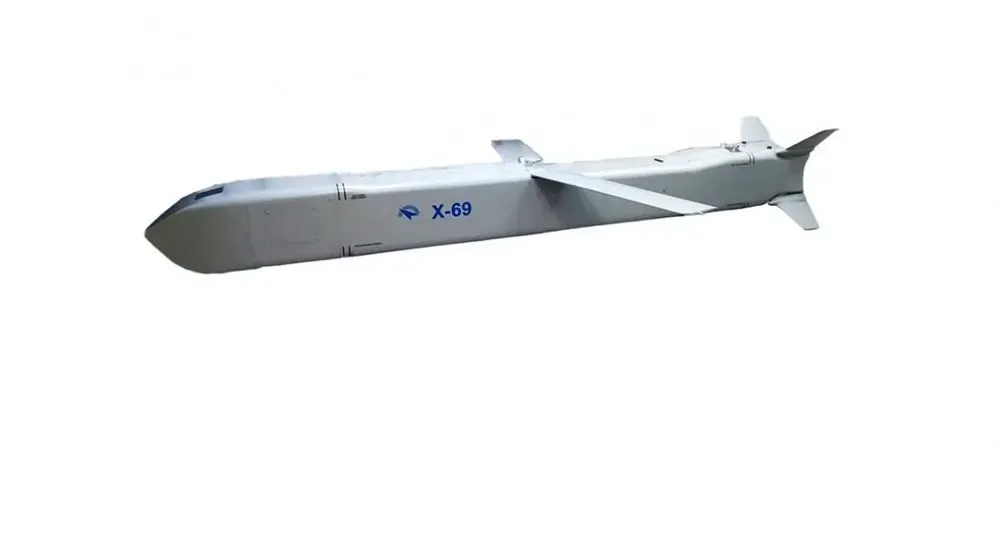Russia attacked Tripoli TPP with subsonic X-69 missiles, which are older than "Kinzhal" - Defense Express
Kyiv • UNN
Russia has again used new subsonic X-69 cruise missiles with a range of 400 km, this time to strike the Tripoli thermal power plant, demonstrating their ability to penetrate Ukrainian air defense and the potential for massive strikes from tactical aircraft.

The Russians used the latest subsonic missiles X-69 to strike the Tripoli thermal power plant, and it's worse than the Kinzhal. Defense Express writes about this with reference to its own sources, UNN reports.
Details
According to Defense Express, the enemy used its new X-69 cruise missiles to strike the Tripoli TPP, as evidenced by the wreckage of this missile found at the site of the attack.
The publication also noted that the range of the missiles was about 400 km. This parameter exceeds the known estimates of the range of the X-69 at 300 km, as the next iteration of the X-59MK2.
Despite the fact that this missile is subsonic and has a smaller warhead than the "hypersonic" X-47M2 "Kinzhal", the use of the X-69 by Russia to strike the Tripoli TPP may be considered a worse situation.
The journalists note that the effective strike of this missile indicates that it can penetrate Ukrainian air defense. In addition, its launch from tactical aircraft eliminates a characteristic feature of large-scale missile attacks, when takeoffs of Tu-95MS and MiG-31K strategic bombers are recorded.

Defense Express emphasizes that it is by launching this projectile from a Su-34 or Su-35 that it can be more widespread due to the larger number of carriers. But only after Russia establishes its full-scale mass production, because it is not currently in stock.

The publication calculated the possible range of this missile and attached a map showing hypothetical launch areas, without taking into account the possibility of the enemy using Belarusian airspace. They also noted that 400 km is a sufficient distance to hit a large part of the objects on the territory of Ukraine. If Russia repeats the practice of 2022 and attacks from the airspace of its satellite, the entire territory of Ukraine, except for the Zakarpattia region, could be added to the target area.
Additionally
Specialists of the Kyiv Scientific Research Institute of Forensic Examinations in February of this year for the first time examined the wreckage of the Kh-69 cruise missile, with which the enemy began to strike Ukraine.
The main object of the study is the compartment where the combat unit is located. A corresponding sample of this type of missile is being studied by the Institute's experts for the first time. The surviving fragments have a minimal amount of microelectronics and any components of the control and guidance systems, but the marking on the body gives information about the date of manufacture at the end of 2023.
He added that the Kh-69 is a modified Russian Kh-59MK2 missile with certain features
The Kh-69 air-launched missile is the result of the Kh-59MK2 modification, it can be launched from fighters and bombers, and the range of carrier aircraft is large. This type of weapon began to be used more massively by the enemy on the territory of Ukraine from 2023. A characteristic feature of the "X-69" is the square section of the hull. In addition, the range of use, flight speed, and warhead have changed in the modified version.An obligatory stage of the expert investigation will be the analysis of the materials of the missile body, as well as the specific foil placed under the outer skin of the warhead and likely allowing impact elements or any other high-speed elements to lead to air detonation of the missile.
Recall
In February, Defense Express speculatedthat Russia may have used X-69 cruise missiles for the first time during its winter strikes on Ukraine.